Vintage Chicago Auto Show: Where Were You In ’82?
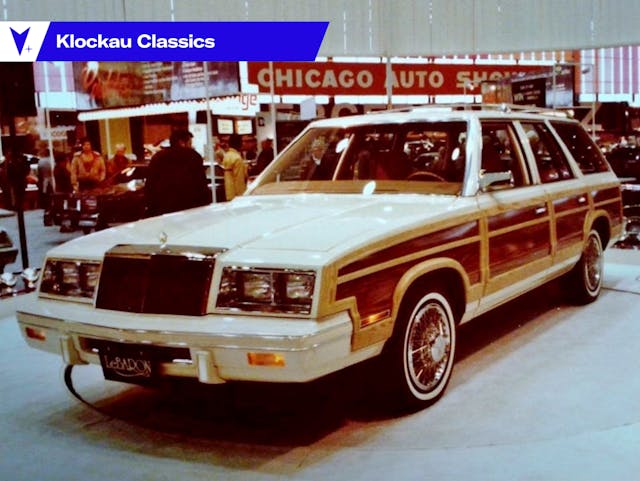
My good friend Jim Smith has been attending the historic Chicago Auto Show for over 50 years. I’ve known Jim for several years, thanks to Facebook, and I’ve bought a whole bunch of dealer promo models and vintage brochures—mostly Cadillac and Lincoln, of course—in that time. As a fellow gearhead and Broughamophile, he has taken many pictures at the show for decades, well before it was cheap and easy, as it is today with smartphones. Lucky for us! So let’s dive into a world of Broughamage and wood-sided wagons—and no crossovers! Yay!—and see what kind of new rolling stock is on display.
Let’s start off at the Chrysler section, shall we? This year, it was all about the K-Car. Though the Dodge and Plymouth versions had appeared a year earlier, plush Chrysler variants joined them in ’82. LeBarons were offered in four body styles, including a coupe, sedan, and the handsome faux-wood Town & Country station wagon shown above. Those of you of a certain age will recall, like your author, that Ferris Bueller’s mom drove one of these.

The big news, however, was the convertible, which was finally offered by an American manufacturer for the first time since the 1976 Eldorado was discontinued. GM would respond almost immediately, however, with Eldorado and Riviera convertibles.
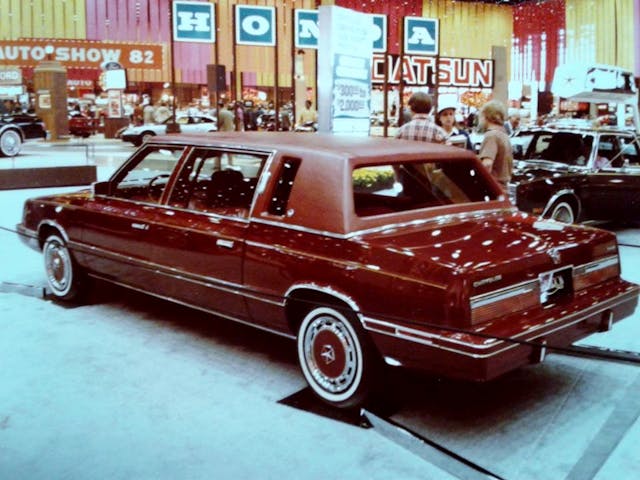
A Dodge 400 convertible was also offered for a bit less than the LeBaron. And there was even a K-car limousine! Known as the Executive, this Mini-Me limo was based off of a LeBaron coupe, with an appropriately stretched wheelbase and fold-out jump seats. Color-keyed wheel covers a la Mercedes-Benz were available on all LeBarons, not just the Executive.

The R-body Chrysler New Yorker and Newport were cancelled after 1981, so what had been the ’81 RWD LeBaron gained a new roofline with a landau top and became the 1982 New Yorker.

This only lasted one year, however, as the New Yorker would migrate to a stretched LeBaron platform for ’83. This car would remain in the lineup through 1989 as simply the Fifth Avenue.
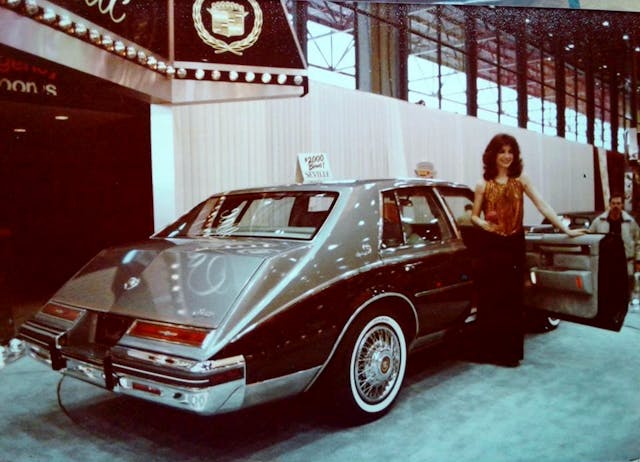
Meanwhile, over at GM, Cadillacs were about the same as they had been since 1980, except for one minor detail. The 368-cubic-inch V-8, which had powered most Cadillacs since 1980, was replaced with the HT4100 V-8. Which, as most of you know, was perhaps not the greatest engine Cadillac made. But I love them.

It was somewhat slow and weak compared to recent 368- and 425-powered Caddys, and of course its reliability would prove somewhat lacking. But in ’82 it was new, fuel-efficient, and probably interesting to new Cadillac shoppers. The hangover would come later for many, but not all: a friend’s father-in-law’s ’83 Seville made it well past 160,000 miles with nary a hiccup.

Only one Cadillac still retained the 368, with V4-6-8 electronics intact: The Fleetwood Seventy-Five sedan and limousine. Technically, its the “Fleetwood Limousine,” as my friend and Caddy guru Eric DeVirgilis says, but I lump the Seventy Five monikor to all of Cadillac’s factory-built limos. They were available either with or without a divider window. Most were black. All were plush!
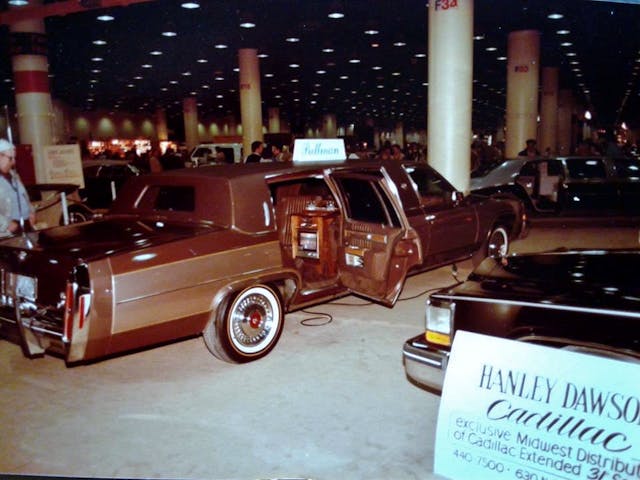
Of course, that didn’t stop coachbuilders from making their own Cadillac stretch limousines. These were displayed by Hanley Dawson Cadillac, which was for years the big downtown Chicago Cadillac dealer. Long gone now, sadly.
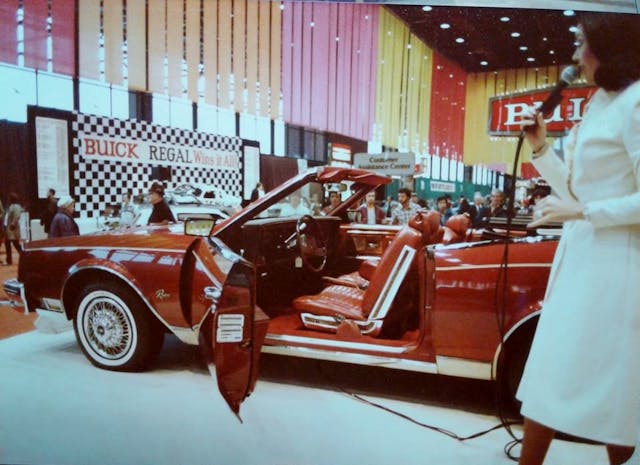
As previously mentioned, Buick had a new Riviera convertible to show off. It was the first Buick soft top since the 1975 LeSabre.
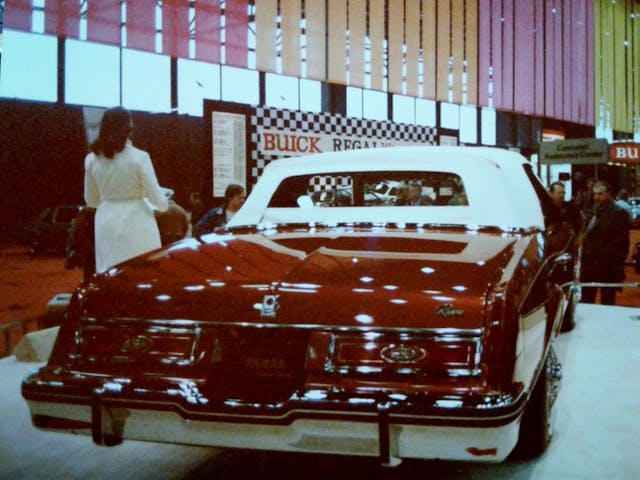
Only two colors were initially offered: White and Red Firemist. Only 1248 were built for 1982, due in part to the MSRP of $24,064 (about $74K today). That was about 10 grand more than a Riviera coupe, which had a base price of $14,468 ($44,500). So you had to really want the convertible.

As with many Detroit special editions, these were farmed out to American Sunroof Corporation (ASC). Coupes were sent off, and they were converted (ha!) into luxury drop-tops like the one seen here.

And here we have one of the most popular U.S. cars of the early 1980s: The Oldsmobile Cutlass Supreme coupe. These were absolutely everywhere when I was a kid, and I especially remember a school friend’s mom owned one—triple burgundy metallic. It was, naturally, a Brougham.

But the Broughamiest Olds of the year was the Ninety-Eight Regency. These were preferred by Midwestern professionals, who wanted to let people know they were “doing well” but didn’t want to look like a bunch of pretentious snobs.

And it was a pretty darn nice car in its own right. Unlike Cadillac, the Olds retained its 5.0L-liter V-8, though the 4.1-liter V-6 was the standard engine. You could also get the 5.7L Diesel if you were so inclined, but by the early 1980s, the appeal of a Diesel GM product had waned considerably. Kind of a shame, as by this time all the bugs had been worked out.

Over at the Ford display, LTDs were well in evidence. This year marked the return of the historic Ford blue oval emblem, and it appeared on all 1982 models, from Escort to Econoline to the top-drawer LTD Crown Victoria, as seen here. A coupe was also available, but the four-door sedan far outnumbered it in demand. Despite this, the LTD coupe would last all the way through the 1987 model year.

And when it came to Ford longroofs, none were nicer than the LTD Country Squire, with its famous Di-Noc vinyl woodgrain sides. You could even get leather as an on them.

The interiors on these were quite nice, almost to a Lincoln Town Car/Mark VI standard. It and the slightly flossier Mercury Colony Park were FoMoCo’s best family haulers. No crossovers, and even the Aerostar minivan was still a few years away. Just wagons, in small, medium, and large. The only other options for family hauling would have been an Econoline Club Wagon or Chateau full-size van.
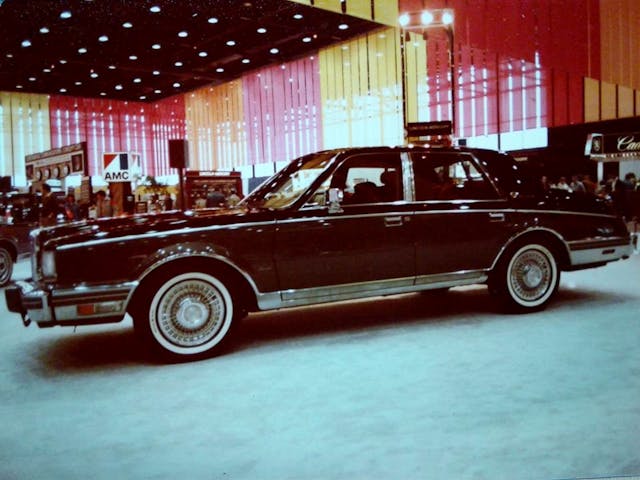
Meanwhile at Lincoln, a new Continental appeared, more or less replacing the Versailles, which was discontinued in 1980. It was smaller than the Town Car and Mark VI and was clearly meant to compete with the Cadillac Seville, right down to the bustleback styling out back. It would last until 1987 and would be the last V8-powered, rear-wheel-drive Continental.
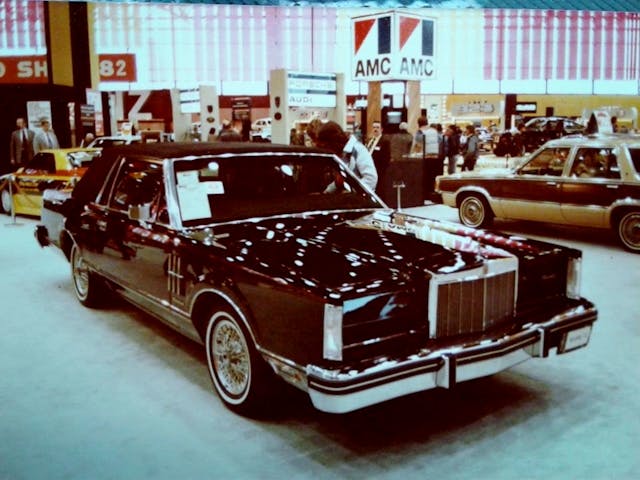
Finally, let’s take a look at the top-of-the-line Continental Mark VI. It rode the same Panther chassis as its Town Car sister, but with the spare-tire hump and hidden headlamps that had been a Mark feature for decades. It was also the last two-door, as the Town Car coupe lasted only for 1980–81 and disappeared for good.

The ’82 Continental Mark VI was pretty much the same as it had been since its 1980 introduction, with the exception of new colors and genuine wire wheels, which had become available in 1981.
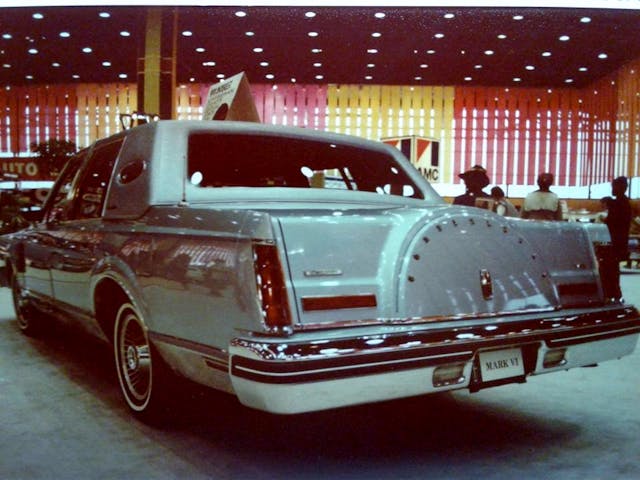
Our time is up for this week, but rest assured there are still many more vintage pictures from Jim’s cache to share in the future, from the 1970s through the early ’90s … and beyond. Until then, keep calm and Brougham on!



The HT 4100 had a rep for oil use and head gasket problems. Both were true. In the case of oil use, most shops assumed it was because of the aluminum block. The assumption was that it was linerless, like the Vega, that the cylinder bores were scored, and that it therefore could not be repaired. Truth was that it used cast iron bores. Instead of a ring-sealing issue (in a sense it was I guess), the engine suffered from a tendency for the rings to “stack”-all the grooves would line up. As far as head gaskets, engineering evidently had not yet learned how to account for the differing thermal expansion rates of an aluminum block, iron heads, and steel head bolts. (The Japanese had the same problem but reversed-iron block with aluminum heads). Adding insult to injury, GMs official “repair” for the head gaskets was leak-stop pellets.
Later versions resolved these problems but could not overcome the bad reputation.
The interesting thing about the HT 4100s is that all I heard about when I was in trade school in the 90s is how horrible they were, and I steered clear of them for years. In more recent times, I purchased an Allante with a 4.5, which I have since discovered is essentially the same engine. It has 150K on it so far with no issues, and I’m not babying it